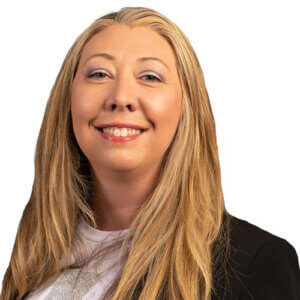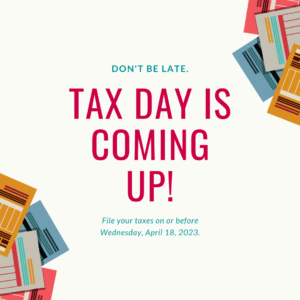A friend confides that the house sale she thought would bring a free-and-clear down payment on a retirement condo in sunnier climates took a surprise turn.
Before settlement, her husband admitted he needed $50,000 from the sale to settle up credit cards she thought he’d paid down.
When she asked for a fuller account of his accrued credit card debt he would only say he’d used the card to pay for their “vacations” and other “travel expenses.”
Funny, she said, she didn’t remember taking that trip around the world or any other excursions that would justify such debt.
As long as people are charging to credit card accounts at unmanageable rates – some even hiding their ballooning debt – the need for Debtors Anonymous will continue to grow.
Debtors Anonymous long ago recognized that runaway spending – especially where the default “strategy” is to kick the can down the road – is a scenario that plays out far too often all across America.
Credit card balances increased by $17 billion in the second quarter of 2021, according to the Federal Reserve Bank of New York’s Center for Microeconomic Data.
While mortgage balances remain the largest component of rising household debt, the far bigger concern for the financial well-being of consumers is amassing debt where there is no collateral and where there is little, if any, credit screening.
The kind of credit card balance spike referenced in the Federal Reserve Bank report underscores the mission of Debtors Anonymous – starting people on the long crawl up and out of their financial sinkholes.
What Is Debtors Anonymous?
Helping consumers get their spending under control since its founding a half century ago, Debtors Anonymous is a 12-step program (based on the Alcoholics Anonymous model) aimed at those who want to stop incurring unsecured debt.
Credit card debt wasn’t as widespread and its dangers not nearly as well known back in 1968 when those attending an AA meeting in New York began discussing their money issues.
What followed was a program meant to help people save money. But within three short years, group members and their family and friends realized the biggest challenge in reaching financial solvency wasn’t an inability to save, but trying to pay down debt that multiplied month by month.
Still, it wasn’t until 1976 that Debtors Anonymous meetings in New York City were held on a semi-regular basis. Through fits and starts, the group continued to grow and now claims more than 500 registered meetings in more than 15 countries worldwide.
Group members strive for solvency, described by Debtors Anonymous as the “practice of not incurring any new unsecured debt one day at a time.”
Unsecured debt is any form of debt not backed up by collateral. It is the lowest of low bars to clear and doesn’t require much more than a signature.
Secured debt, by contrast, uses collateral such as houses or cars, to give the lender security in case the borrower defaults. The borrower for secured debt must show how he or she can make the payments in order to get the loan.
Debt Addiction and Compulsive Debting
Debt addiction might sound like an attention-grabbing title in the self-help section of the local bookstore. It’s much more than that.
Debt addiction is a too-real condition in which incurring debt is a means of avoiding real issues and challenges in people’s personal lives.
It’s not merely spending money you don’t have at the moment of purchase. We all do that. It’s using debt as a crutch to avoid dealing with financial or personal issues.
It’s the bag of chocolate chip cookies you eat when you’re feeling blue, only with debilitating and long-term binge consequences that often sprout from not having the intention or a reasonable plan to pay down rising debt.
Debt addiction doesn’t happen all at once. At some point it becomes easier to keep charging items to your credit card than to devise a timetable to pay off those expenses. So spending continues to trump planning.
When you incur debt to avoid acknowledging that you aren’t making enough money to afford your lifestyle, you’re sliding down a slippery slope that offers few if any toeholds.
Likewise, “compulsive debting” isn’t one of those terms you suspect a therapist invented to justify his or her hourly fee.
Debtors Anonymous calls compulsive debting a “disease.” And if that sounds overly dramatic, it’s really not when you examine the causes and look closely at the symptomatic behavior that fuels it.
Compulsive debting is not binge shopping for clothes to celebrate a new job even though you’re still a month away from your first paycheck and you’ve already spent it.
It’s a progressive habit that almost never “works itself out.” It’s a pattern of spending that doesn’t come close to satisfying the real needs and obligations in our lives. And it’s often fueled by a lack of responsibility and discipline that either spills into other areas of our lives or was there all along.
Signs of compulsive debting are sometimes recognizable to family and friends but they might be shy about bringing it up. Debtors Anonymous can help people come to grips with warning signs, some more obvious than others.
- Your account balance grows month to month but you’ve reached a stage of denial where you file the bill away without looking at the balance in order to avoid feelings of helplessness.
- Waking up in the middle of the night worried about how much you owe.
- You know you need to make a plan to pay down debt, even set deadlines to do it, but always end up putting it off for one reason or another.
- You hide your credit card bills from your spouse or significant other.
- A “sale” means one thing and one thing only to you. It’s money you convince yourself you’re saving, not money you’re laying out for an item that you may not need.
- You react to disappointments in your life by deciding that buying yourself something is the best way to feel better.
- Your worry about debt spills into other areas of your life, such as money arguments with friends and family or excessive drinking or gambling.
- You open a new credit card because you’ve exceeded your limit on another.
- You make a budget but the commitment to finally curb debt lasts no longer than a hastily made New Year’s Resolution.
How do you step out of the quicksand of “compulsive debting?” Making a budget and sticking to it is one important way. So is a commitment to paying bills on time.
Perhaps most elemental is pledging to abstain from incurred debt one day at a time. And, in many cases, success is predicated on getting the help of some new friends who know what you’re going through.
Debtors Anonymous Meetings
There’s a reason why weekly meetings are an important part of groups such as Alcoholics Anonymous, Gamblers Anonymous and Debtors Anonymous.
Strength in numbers is a proven tool in how people address and manage their addictions.
You’re not alone. There’s nothing to feel ashamed about. Finding a Debtors Anonymous meeting is the first important step.
DA meetings are often held at churches and sometimes at public libraries. The size of the group can vary from a handful of people to 100 depending on the population density where you live.
What can you expect?
First and foremost, support. Confidentiality is another.
Most meetings include a designated speaker who can address a personal topic of concern or interest, or a general issue challenging folks who are striving for solvency.
Meetings often begin and end with a few announcements and usually last between an hour and 90 minutes.
They can include anything from a reading of the Twelve Steps to introduction of new literature to read on topics pertinent to personal responsibility.
Time is set aside to discuss the business of DA but, most importantly, for people to share their stories.
Members have the floor to talk about their successes, challenges and disappointments. Everyone is reminded that what is said and happens in the meetings stays in the meetings.
There are no dues or fees associated with membership in Debtors Anonymous. Donations are encouraged from members.
Since one of the early commitments of the Twelve Steps is that members “came to believe that a Power greater than ourselves could restore us to sanity,” meetings routinely end with members standing, holding hands and offering a prayer.
While not an inherently religious group, DA stresses that belief in something greater than ourselves, a “higher power,” is integral to conquering addiction.
Where Can You Find a Debtors Anonymous Meeting?
The simplest way is to go to DebtorsAnonymous.org. There you can find everything you need to know about how the organization began, its history and its mission.
It’s easily navigated. Click on “Find a Meeting.”
Meetings are filtered by location, day of week, time of day and type.
Skype, Hybrid, Videoconference are only a few of the options there. The important thing is to reach out for help and support.
Debtors Anonymous lists more than 500 chapters in countries all around the world.
Bottom Line
Accepting you have a problem is clearly the first step toward conquering debt addiction and compulsive debting.
Meetings are an integral part of the program because they are a weekly reminder that while feelings of guilt, temptation and isolation may continue to haunt you, they are not your burden only.
Others are going through or have gone through the same thing. Meetings offer a group dynamic that can grow the confidence needed to face a daunting challenge.
It’s a long journey. Don’t be too tough on yourself.
Not all credit issues are created equally. Some are easier to solve than others. Because of that, it may help to seek credit counseling options for lingering credit issues.
Take comfort in knowing that help is out there. Spiritual and professional alike.

8 MINUTE READ
Home » InCharge Blog »
Sources:
- N.A. (ND) Debtors Anonymous. Retrieved from https://debtorsanonymous.org/
- Konish, L. (2018, August 11) Your debts and shopping could become an addiction. Here’s what recovery looks like. Retrieved from https://www.cnbc.com/2018/08/10/what-its-really-like-to-overcome-addictions-to-debt-and-shopping.html
- Heshmat, S. (2018, June 12) 5 Patterns of Compulsive Buying. Retrieved from https://www.psychologytoday.com/us/blog/science-choice/201806/5-patterns-compulsive-buying
- N.A. (ND) Are you a compulsive debtor? Retrieved from https://www.moneymanagement.org/debt-management/resources/are-you-a-compulsive-debtor

















